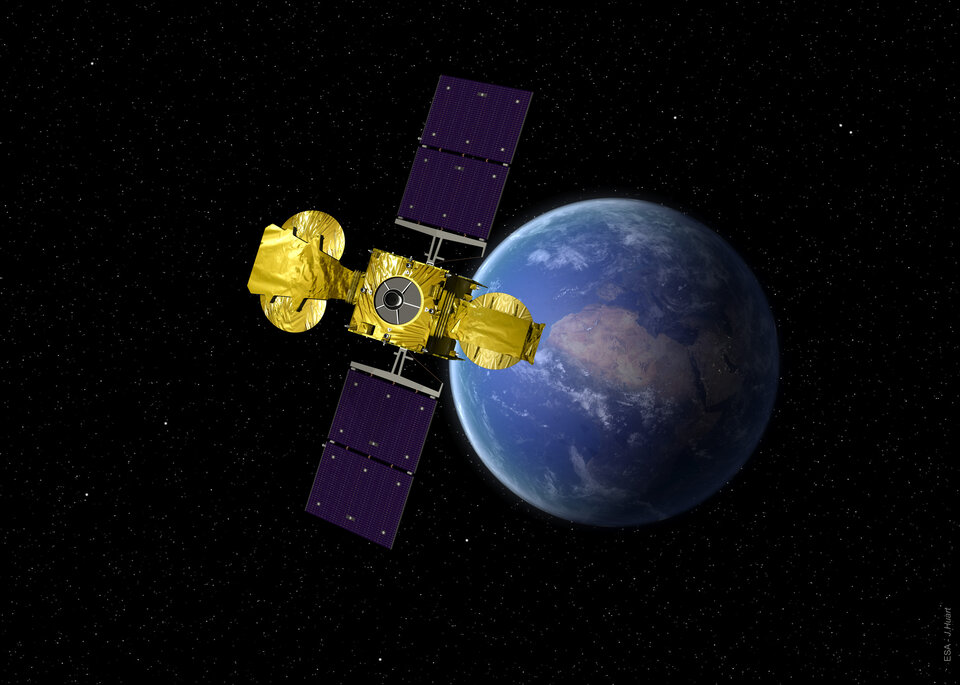Hylas-1 mated with its launcher
Europe’s Hylas-1 innovative telecommunications satellite has been moved from its fuelling stop at Europe’s Spaceport in French Guiana to the Final Assembly Building. Once there, it was attached to the Ariane 5 rocket that will loft it into space.
The distance covered on 17 November was only 5 km, but Hylas-1 was housed in a special transport container to protect it from French Guiana's variable weather: high temperatures and humidity interspersed with torrential rain.
As the satellite now contains propellants, the main highway to the Spaceport was closed for the duration of the trip, and the two members of the project team escorting Hylas-1 had to maintain a minimum safe distance of 130 m.

Having arrived safely at the Final Assembly Building, the next morning it made a small but crucial start on its upward journey to geostationary orbit by being lifted almost 40 m by crane to be secured on the top of its Ariane 5 launch vehicle.
Hylas-1 finally met up with its launch co-passenger: the Intelsat 17 satellite, already mounted on its dual-launch structure and encapsulated within the rocket fairing. On the following day of 19 November, this fairing was lowered over Hylas-1 to complete the launch vehicle build.
The Hylas-1 launch, designated as flight V-198, is scheduled for 26 November, and can be viewed live from ESA's Hylas-1 minisite (see right hand link).

Designed to deliver European broadband connectivity as well as television broadcasting and other services, Hylas-1 is ESA’s first public–private partnership to result in an operational mission.
ESA has contributed its advanced communication payload, but the majority of the mission is being paid for by Avanti Communications in the UK.















 Germany
Germany
 Austria
Austria
 Belgium
Belgium
 Denmark
Denmark
 Spain
Spain
 Estonia
Estonia
 Finland
Finland
 France
France
 Greece
Greece
 Hungary
Hungary
 Ireland
Ireland
 Italy
Italy
 Luxembourg
Luxembourg
 Norway
Norway
 The Netherlands
The Netherlands
 Poland
Poland
 Portugal
Portugal
 Czechia
Czechia
 Romania
Romania
 United Kingdom
United Kingdom
 Slovenia
Slovenia
 Sweden
Sweden
 Switzerland
Switzerland



























